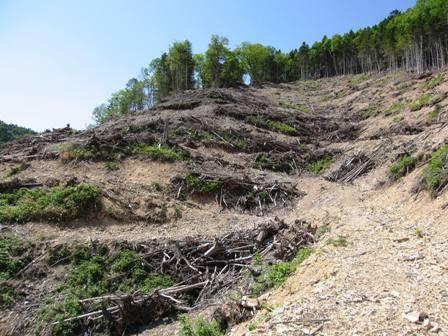Editor's note: In an effort to better understand how other countries are managing their parklands, and to compare and contrast U.S. efforts to those from abroad, Traveler on occasion run items from beyond U.S. borders. This post questions why Japan allows clear-cutting in its iconic park, Daisetsuzan National Park.
What would you think if logging were permitted in Yellowstone National Park, or if a rock quarry were allowed in Yosemite National Park, or if uranium mining was under way in Grand Canyon National Park?
Of course, these are only theoretical questions, as these consumptive uses are prohibited in these icons of the National Park System. But not all national park systems around the world hold such protective covenants for their parks.
For example, consider the plight of Daisetsuzan National Park. It is revered in Japan as that nation’s iconic park. Covering 900 square miles on the island of Hokkaido, the park contains active volcanoes, deep forests, brown bears, and cataracts that surge with spring snowmelt.
Last August, the park was the focus of a National Geographic magazine photo spread and essay by Gretel Ehrlich. Lush with gorgeous pictures of the park whose name translates to “big snow mountain” and the rich prose of Ms. Ehrlich, the story presented an idyllic setting.
“Fire and water collide in Daisetsuzan. Two massive volcanoes pin the national park at the center of Japan’s northernmost island, Hokkaido, their steaming peaks dropping off into forested, snow-pillowed, river-washed slopes – have a million acres churned green, orange, red, and white by the seasons,” wrote Ms. Ehrlich in opening her essay.
Unfortunately, her ensuing words didn’t quite tell the park’s entire story.
As the accompanying pictures clearly show, not all of Daisetsuzan National Park is as idyllic or protected in the American sense of national park protection. The images were captured by Dr. Dennis Whigham, senior scientist and deputy director of the Smithsonian Environmental Research Center in Maryland, and Toshimi Ichikawa, who is striving to protect the park's old-growth forests.
Along with Charles Wilkinson, the Moses Lasky Professor of Law at the University of Colorado, and Dr. Michael Hutchings, a professor from the University of Sussex in England, Dr. Whigham had visited Daisetsuzan in August prior to attending an international symposium on forest ecosystems in Sapporo, Japan.
One of the purposes of the symposium was to discuss in public the destruction of old growth and mature forests in Daisetsuzan. After returning home and seeing the National Geographic article, the three felt it necessary to speak out against the logging and, hopefully, raise the public’s consciousness.
“The clear-cutting that we observed was almost beyond belief in the level of destruction; both on the affected sites and in adjacent valley environments now receiving massive amounts of runoff from the clearcuts,” said the three. “It is almost unimaginable to us from the USA and UK that actions of this sort are permitted in one of the most beautiful parks in the world.
“The accompanying photographs show another side of activities in the park that citizens of Japan and the world need to know about.”
If you agree, you can contact Dr. Shoichi Kawano, president of The Conservation Network for Forest Ecosystems in Japan, about how that country’s policies that allow this type of logging in a national park setting can be changed. Dr. Kawano can be reached at this email address: [email protected].


 Support Essential Coverage of Essential Places
Support Essential Coverage of Essential Places







Comments
I surely wouldn't stand for seeing this in any US park. But, there are other models of parks where logging may be an appropriate. One example is based off of the Biosphere Reserve . In this model core zones are heavily protected, buffer zones are heavily managed, while in a transition zone consumptive activities can take place. Many "national parks" around the world even have large populations of people living within their boarders (No, not seasonal employees).
I guess I cannot agree or disagree (and shouldn't) until I find out how the park was setup. I'll have to do some digging.
I was able to find an official website that seems to show a protection plan and a use plan. Unfortunately I can't understand Japanese. However, Google can translate non image based text. Here is a link with a map of the park and a translated explanation of the management (it is very brief, and doesn't provide conclusive evidence of a biosphere reserve use model).
Very sad to see such an amazing park that takes hundrends of years to establish itself as we can see it today in a threat of demolition within months or a year. We as the Conservationist must fight as much as we can once we see something something is going wrong or threatened which require conservation voices regardless our nationalities.By the way, it is our right to received the respect we require at our best regarding the technical advice we deliver in term of conservation and other proffessionals must understand this. I'm very angry with these greed ( politicians!!??) who are pushing this activities, may be looking for votes and or loggers!!!?? who they think that their proffessional is much better than others!!